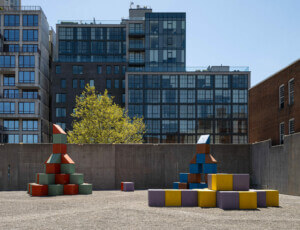Gund Hall by John Andrews, completed in 1972 to house the Harvard Graduate School of Design, is slated for a renovation. The plan is to swap out the glass above Gund Hall’s iconic “trays” and minimally insulated exposed architectural concrete with a higher-performance envelope. The project, led by Boston firm Bruner/Cott Architects, will “model best practices for updating and sustaining mid-twentieth-century buildings,” Harvard said.
When Gund Hall first opened, it set a new precedent as one of the most innovative spaces for design pedagogy. But its midcentury envelope led to high energy consumption, expensive energy bills, elevated maintenance costs, and overall occupant discomfort. The new envelope will rectify these issues while maintaining the building’s iconic form.
Previously, Bruner/Cott has completed other renovations at historic buildings in Cambridge, Massachusetts, including a major restoration of Harvard Hall, a building that dates back to 1766; the conversion of the university’s Josef Lluís Sert–designed Holyoke Center into the Richard A. and Susan F. Smith Campus Center as architect of record in partnership with Hopkins Architects; and a multi-family apartment renovation on the Charles River, Rivermark.

Officials at Harvard see Gund Hall’s renovation as an important learning opportunity for students. In “the Pit” at Gund Hall, located to the building’s southeast, a temporary walled-off laboratory has been built for glazing system mock-ups for the renovation. The space will be used to assess three replacement glazing systems and give students a peek into how building renovations happen in real time.
David Fixler, a lecturer in urban planning and design at Harvard, sees Gund Hall’s renovation as a precedent setting project. “One of the great rehabilitation challenges of our era is to dramatically improve the durability and sustainability of mid-twentieth-century structures while maintaining the architectural essence and character-defining features of these buildings,” Fixler said.
In 2018, Herzog & de Meuron was commissioned to design a 24,500-square-foot addition to Gund Hall, with Beyer Blinder Belle as architect of record. A Harvard spokesperson confirmed to AN that the Herzog & de Meuron addition “is no longer an active project.”
Construction on Bruner/Cott’s renovation will complete in summer 2024.











